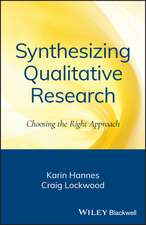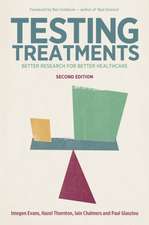Endoplasmic Reticulum Stress in Health and Disease
Editat de Patrizia Agostinis, Samali Afshinen Limba Engleză Paperback – 20 sep 2014
| Toate formatele și edițiile | Preț | Express |
|---|---|---|
| Paperback (1) | 1103.22 lei 6-8 săpt. | |
| SPRINGER NETHERLANDS – 20 sep 2014 | 1103.22 lei 6-8 săpt. | |
| Hardback (1) | 1110.52 lei 6-8 săpt. | |
| SPRINGER NETHERLANDS – 9 aug 2012 | 1110.52 lei 6-8 săpt. |
Preț: 1103.22 lei
Preț vechi: 1161.29 lei
-5% Nou
Puncte Express: 1655
Preț estimativ în valută:
211.13€ • 229.25$ • 177.35£
211.13€ • 229.25$ • 177.35£
Carte tipărită la comandă
Livrare economică 22 aprilie-06 mai
Preluare comenzi: 021 569.72.76
Specificații
ISBN-13: 9789400792517
ISBN-10: 9400792514
Pagini: 460
Ilustrații: VIII, 452 p.
Dimensiuni: 155 x 235 x 24 mm
Greutate: 0.64 kg
Ediția:2012
Editura: SPRINGER NETHERLANDS
Colecția Springer
Locul publicării:Dordrecht, Netherlands
ISBN-10: 9400792514
Pagini: 460
Ilustrații: VIII, 452 p.
Dimensiuni: 155 x 235 x 24 mm
Greutate: 0.64 kg
Ediția:2012
Editura: SPRINGER NETHERLANDS
Colecția Springer
Locul publicării:Dordrecht, Netherlands
Public țintă
ResearchCuprins
Preface. Part I: Cellular responses to ER stress.-1 Biology of the endoplasmic reticulum.-2 A tight-knit group: protein glycosylation, endoplasmic reticulum stress and the unfolded protein response.-3 ER stress signaling pathways in cell survival and death.-4. Eendoplasmic reticulum-mitochondria connections, calcium cross-talk and cell fate: a closer inspection.-5 ER stress and upr through dysregulated er ca2+ homeostasis and signaling.-6 Regulation of ER stress responses by micrornas.-7 ER stress as modulator of autophagy pathways.-8 physiological ER stress: the model of insulin-secreting pancreatic β-cells.Part II: ER stress in physiological & pathological conditions.-9 Pathological ER stress in b cells.-10 Endoplasmic reticulum stress and the unfolded protein response in lipid metabolism and obesity.-11 ER stress and inflammation.-12 ER stress in intestinal inflammatory disease.-13 Role of ER stress in dysfunction of the nervous system.-14 Endoplasmic reticulum (ER) stress in amyotrophic lateral sclerosis (als).-15 Cardiovascular disease and endoplasmic reticulum stress.-16 Signaling the unfolded protein response in cancer.-17 Upr activation in cancer cells: a double-edged sword.-18 Contribution of ER stress to immunogenic cancer cell death.-19 current advances in ER stress intervention therapies. Index
Textul de pe ultima copertă
The Endoplasmic Reticulum (ER) is an organelle with extraordinary signaling and homeostatic functions. It is the organelle responsible for protein folding, maturation, quality control and trafficking of proteins destined for the plasma membrane or for secretion into the extracellular environment. Failure, overloading or malfunctioning of any of the signaling or quality control mechanisms occurring in the ER may provoke a stress condition known as ‘ER stress’. Accumulating evidence indicates that ER stress may dramatically perturb interactions between the cell and its environment, and contribute to the development of human diseases, ranging from metabolic diseases and cancer to neurodegenerative diseases, or impact therapeutic outcome. This book primarily focuses on the pathophysiology of ER stress. It introduces the molecular bases of ER stress, the emerging relevance of the ER-mitochondria cross-talk, the signaling pathways engaged and cellular responses to ER stress, including the adaptive Unfolded Protein Response (UPR), autophagy as well as cell death. Next the book addresses the role of ER stress in physiology and in the etiology of relevant pathological conditions, like carcinogenesis and inflammation, neurodegeneration and metabolic disease. The last chapter describes how ER stress pathways can be targeted for therapeutic benefit. Altogether, this book will provide the reader with an exhaustive view of ER stress biology and the latest insights in the role of ER stress in relevant human diseases.
Caracteristici
Comprehensive cover of the latest developments in ER stress Up to date and succinct description of the role of ER stress in pathophysiology Novel aspects of ER stress physiology never discussed before Includes supplementary material: sn.pub/extras














